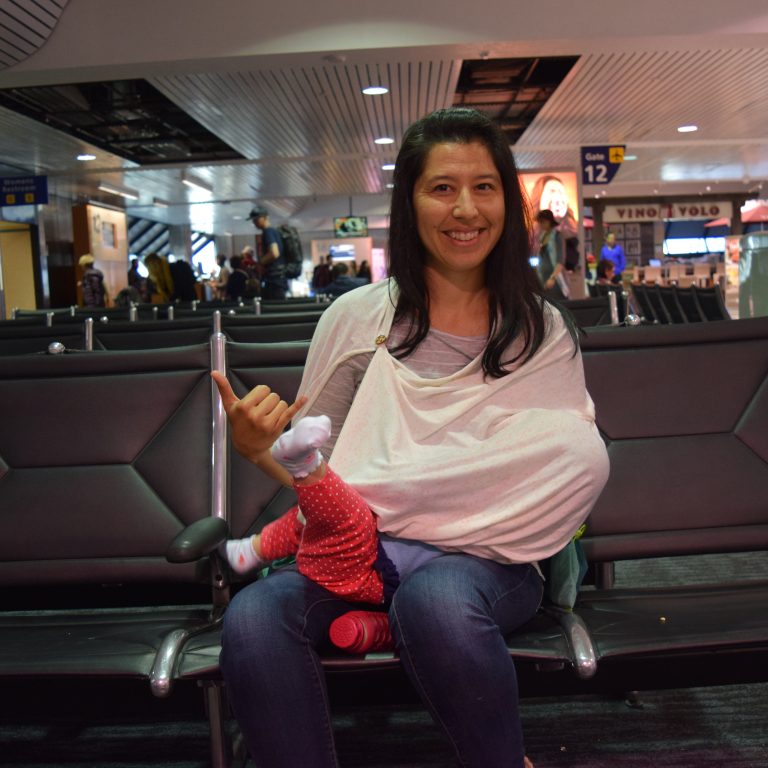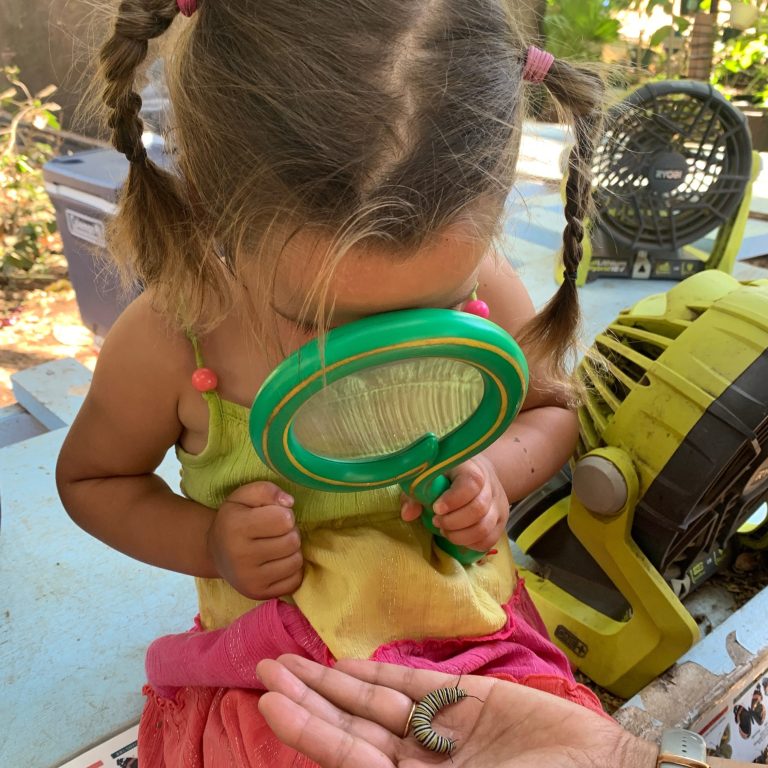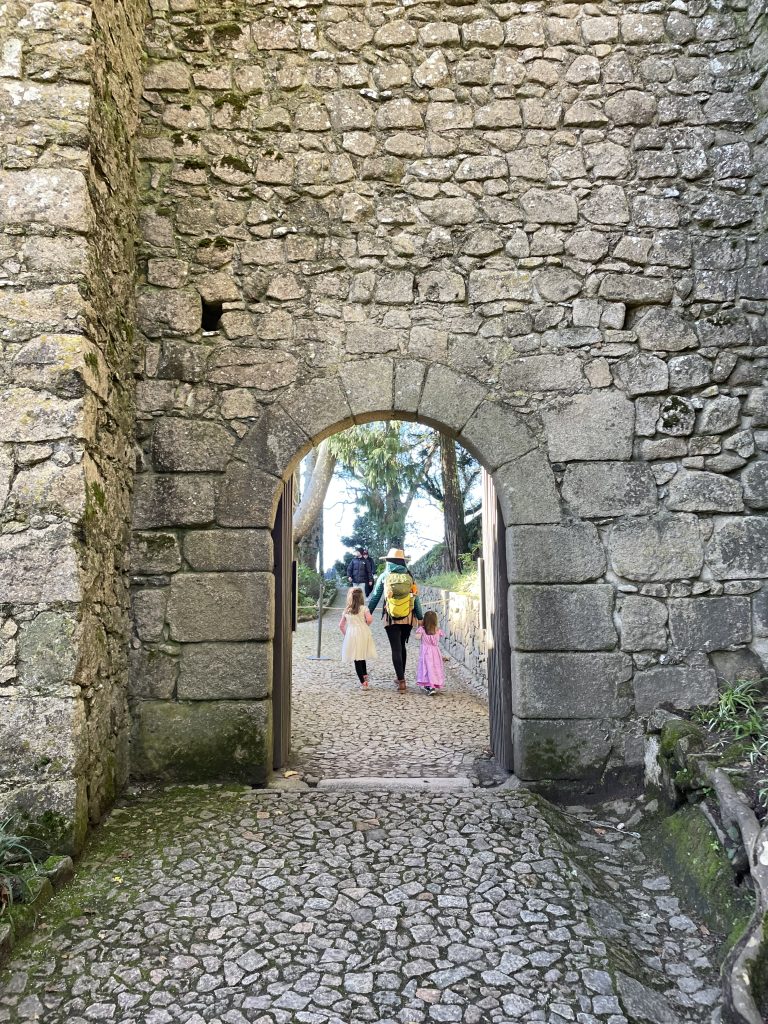As my youngest and my last baby (cue the tears) turned one we celebrated our one-year nursing anniversary (nurseaversary?). I’ve spent the past few days reflecting on my nursing journey – one that started 5 years ago after my first baby!!
Like many first-time mamas, nursing did not come easy to me. My nipples were sore (use this cream), I could never tell if the latch was right (watch this video), and I needed 100 pillows to get the right position where my back/wrist/elbows didn’t hurt.
If I ever wanted to leave the comfort of my home and see the sun again, I was expected to nurse my baby in public, surrounded by strangers and loud noises, without my 100 pillows. You’ve gotta be kidding!
After some practice, of course, just as with everything in parenting-it got easier!
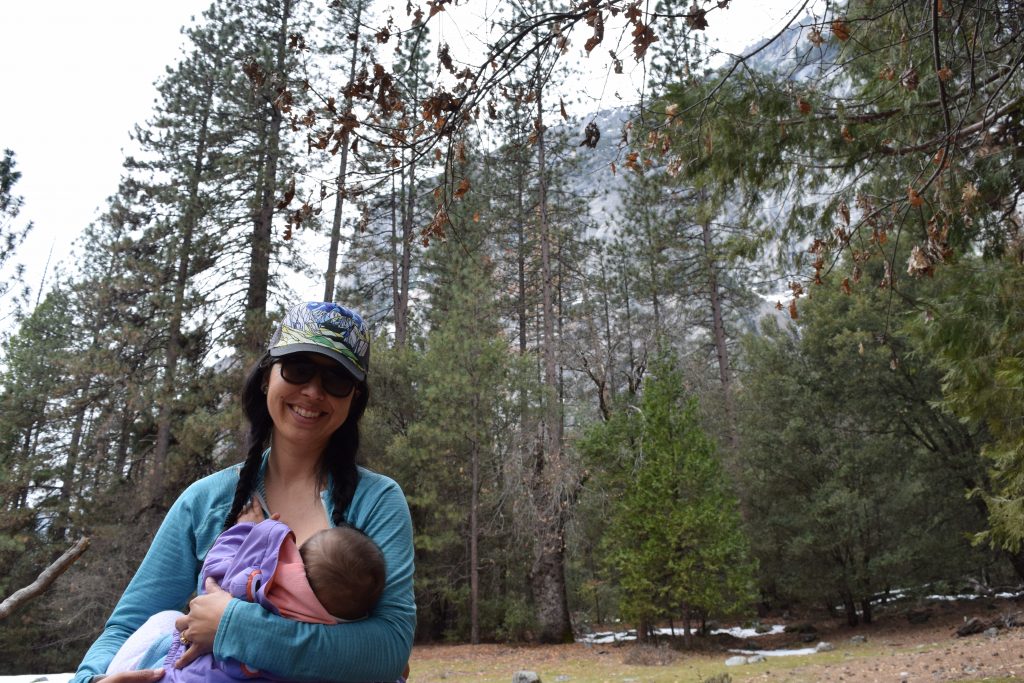
I recognize that there are societal, physical, and emotional reasons why many parents can’t nurse or choose not to. For those moms – I see you and hear you. Some of these tips may be helpful for feeding babies in general while traveling, so read on if it feels good to you.
For those of you who are trying to figure out how to do it all – because that is what is expected of you now as a parent – here are some tips for nursing on the go:
Tips for Nursing while Traveling
Here are 6 tips to get you and your baby out of the house and adventuring around your neighborhood or the world.
1. Be Prepared.
Remember your baby’s schedule does not change just because you are no longer at home. Try to plan your activities with nursing in mind. If you’re going to the zoo all morning, remember at noon the baby needs to nurse so plan a stop in the schedule around that time so you don’t forget and end up with a screaming fussy hangry baby on your hands).

2. Plan stops around your baby's feeding schedule.
Planning stops around your baby’s feeding schedule will help you remember when to nurse. I often forget to feed my baby on the go and then wonder why she is so fussy. Oh, that’s right, you’re hungry! My bad. For example, if you nurse at home before leaving and you know baby needs to eat every 3 hours, figure out where you might be at that time.
Scout out places to take a nursing break like a bench, table, stoop, or plan your day so you are near somewhere you can sit for a minute to nurse.
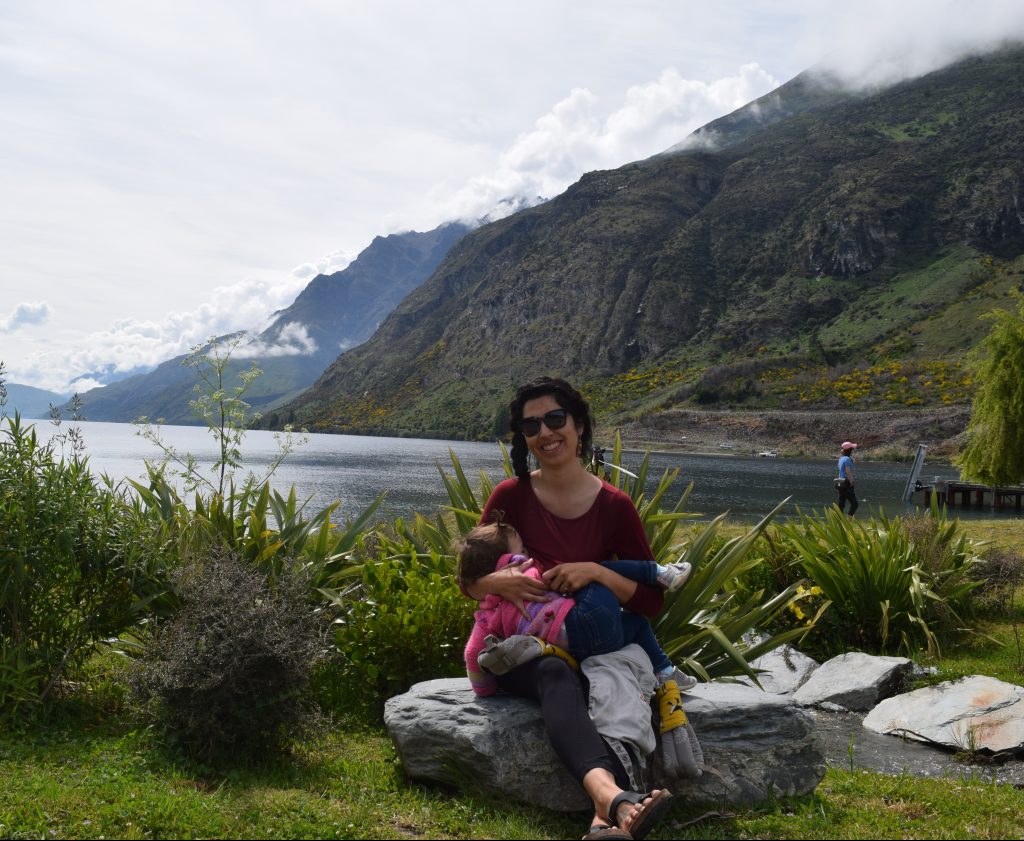
3. Be flexible.
Nursing outside of the home is not only a challenge for you but also difficult for your baby. The outside world can be overstimulating and stressful (i.e. baby nurses more) and/or distracting (i.e. baby nurses less).
Depending on your baby and the environment you are bringing them into, your nursing schedule may just be tossed out of the window. Be kind to your baby as they figure it out, and to yourself for getting annoyed.
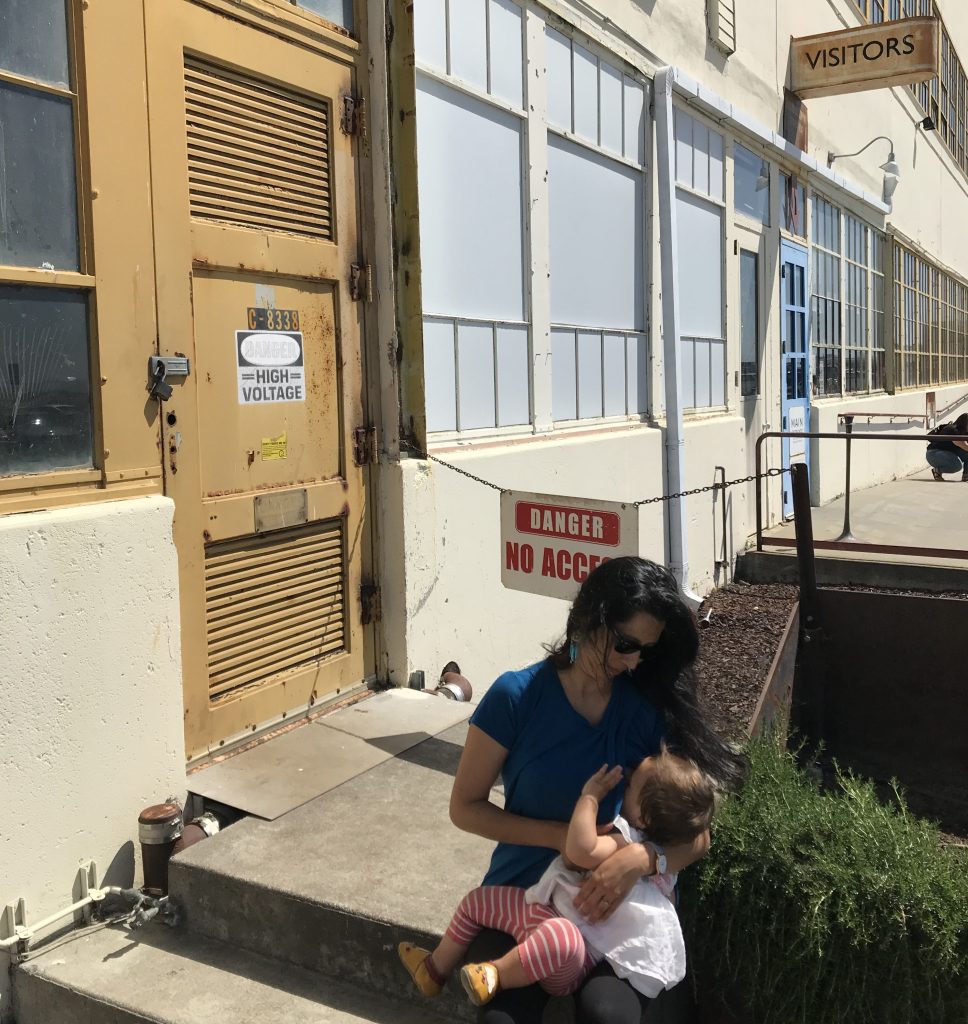
4. Always wear nurse-friendly clothing.
Clothing designed for nursing parents or that allows for easy chest access is a must for breastfeeding in public.
Nursing clothes are great because you can nurse in public and have easy access to your chest area. You’ll want quick and seamless access to your boobs without too much fumbling when baby is screaming at you and you’re already stressed (in public, with all eyes on you…).
Also, wearing nursing-friendly clothing allows you to nurse without worrying about your bra/stomach/underwear showing while you feed your baby and are trying to relax (again, in public, with all eyes on you). Nursing clothes will only expose the parts you want your baby to have access to and none of the rest of your postpartum body!
Read here to find a list of our favorite nursing wear.
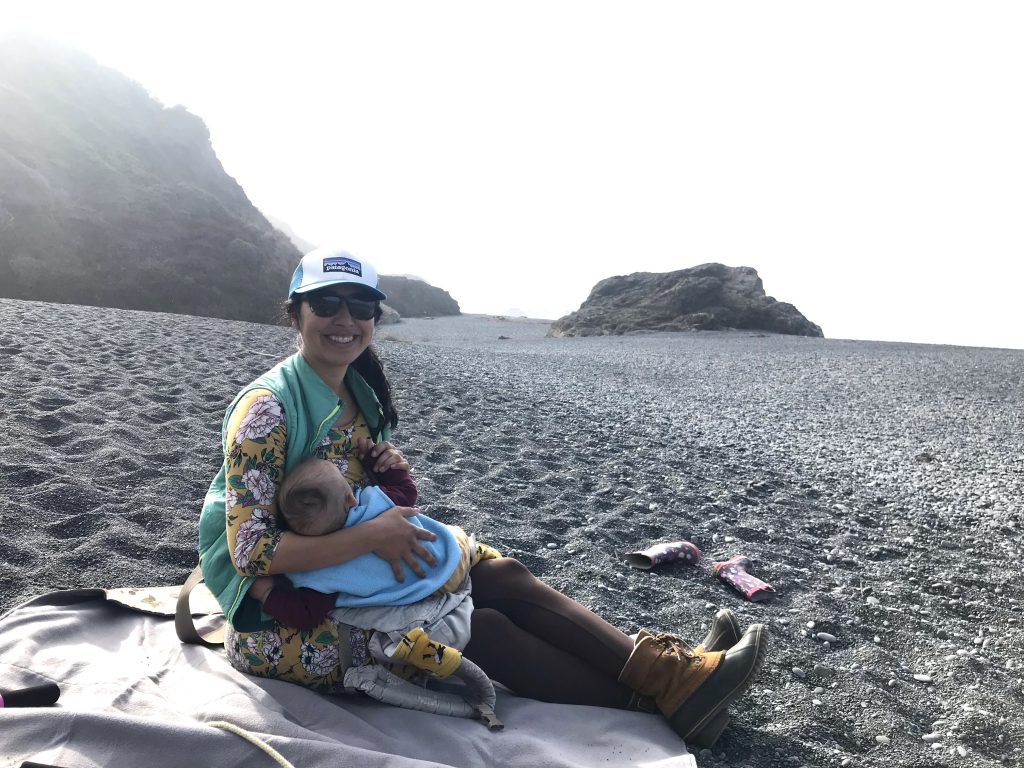
5. Bring a nursing cover.
When I first attempted to venture out of the comfort of my house my pillow sanctuary with the baby I was so nervous about how nursing in public would make others feel. I cared less about this as my baby got older and actually rarely use the nursing cover with baby #2. Either way, nursing covers are good to have around for the following reasons:
- You happen to be in a situation where YOU don’t feel comfortable showing some skin or sharing this intimate moment with the people around you and would prefer to cover up
- You did not heed tip #4 and have a top that is impossible to nurse in and therefore need to pull it up or down in a way that may show more skin or body parts to bystanders than you had planned
- Your baby is easily distracted and putting a cover over their face to block out the world will help them focus on the task at hand
- You’re trying to eat while nursing – the cover is great at protecting little faces/eyes/clothing from dripping spicy ramen, for example…and previous experience.
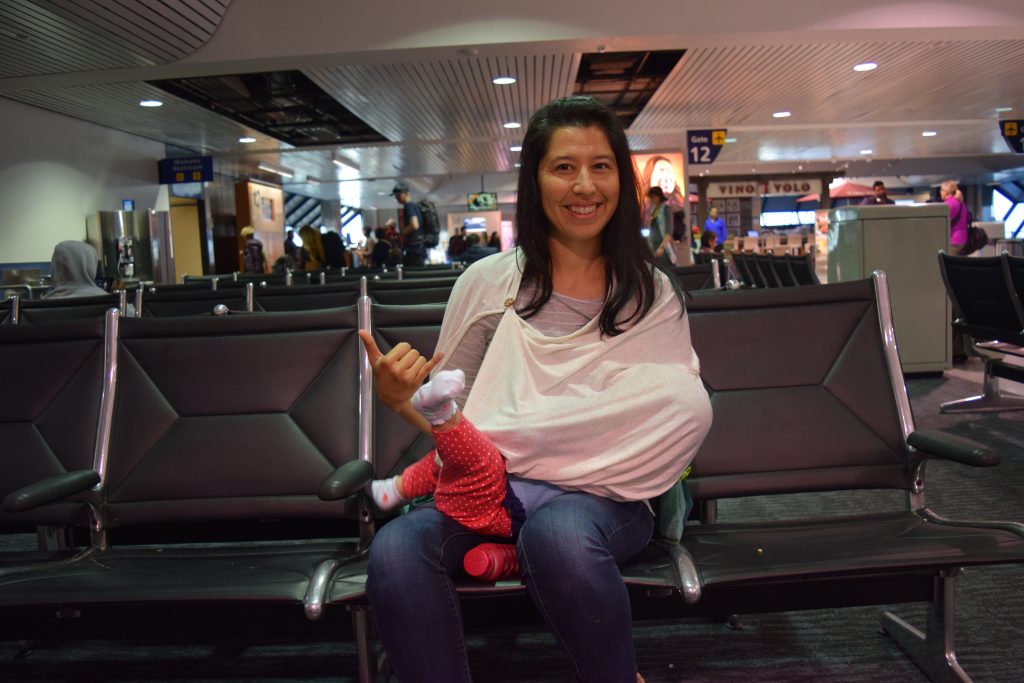
6. BONUS TIP: Try nursing in the carrier.
In a pinch, nursing in an Ergo, Baby Bjorn, or any front carrier can be a discrete way to feed your baby without having to find a place to sit or even use your arms. Practice this at home so you’re not fumbling with getting the baby in the right position, your shirt up, your nipple out, all of which take some getting used to. I love the Organic Cotton Ergo Baby front carrier.
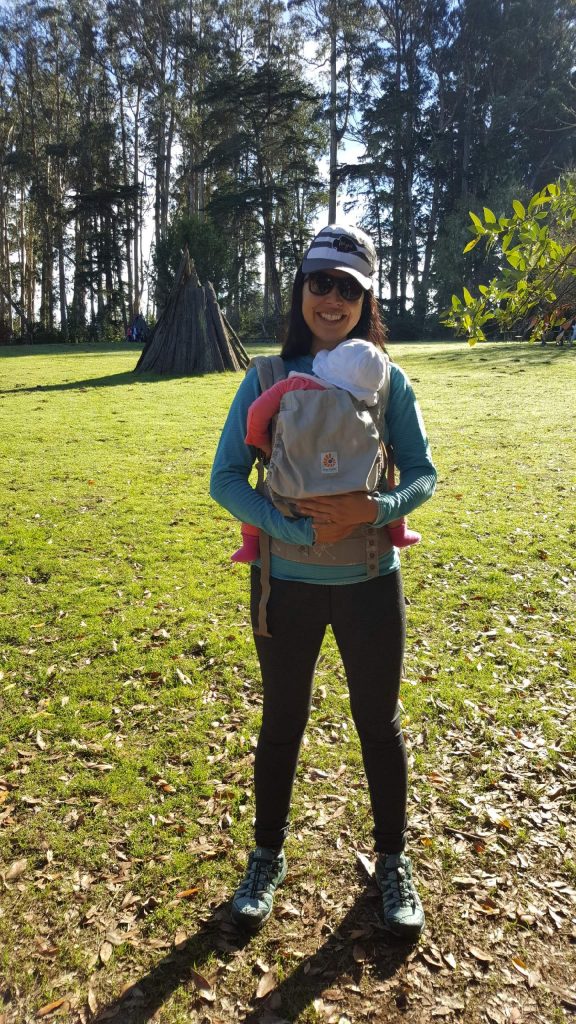
Nursing in public can be a challenge at first, but once you and your baby get the hang of it you will find yourself easily and seamlessly whipping your boobs out to breastfeed as if it were something you had been doing for years. Having the right gear, the right surroundings, the right plans, and the right company will help you along your way.
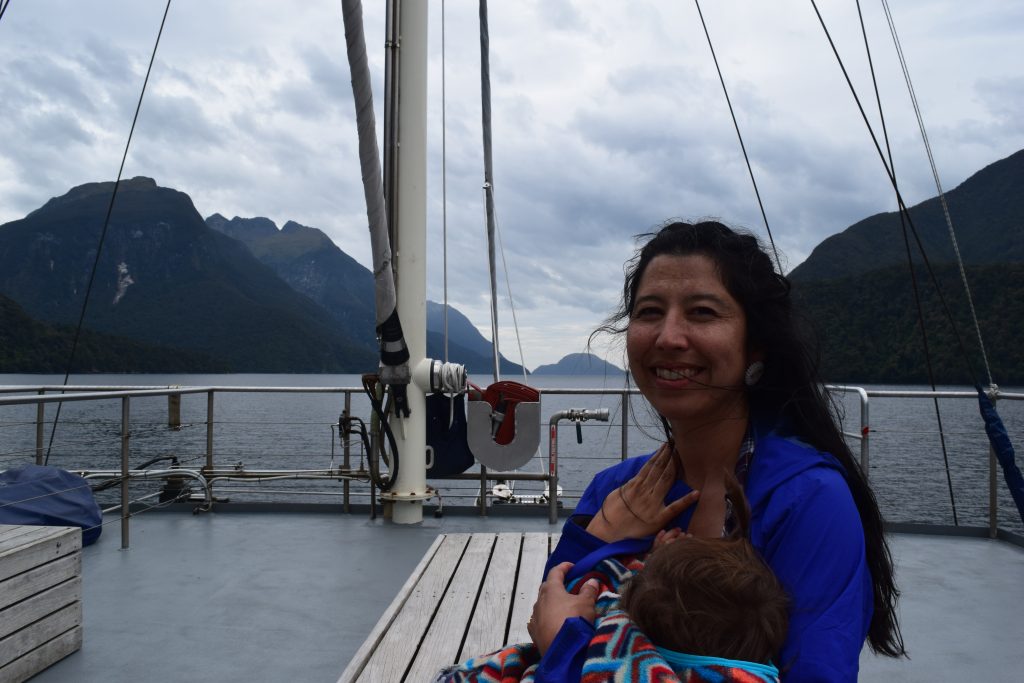
Also, nursing in itself is an act of power, and an act of resistance, especially for Indigenous and Black communities. Historically Indigenous and Black babies have been removed from their families through slavery, boarding schools, and the child welfare system. Although breastfeeding is sacred and traditional for both of these communities, the racist and violent policies they faced have created a stigma around breastfeeding. Black and Indigenous parents have the lowest rates of breastfeeding in the United States.
Breastfeeding was not the norm in my own family, not because my grandmother or mother didn’t want to but because they did not have the cultural and community support to help them – both had to return to work shortly after birth in a time when pumping was not encouraged. I have been lucky to be surrounded by a supportive breastfeeding community, to have received training as a doula, and to have had home midwifery care both prenatally and postpartum. I am proud to say that I was able to nurse my baby when they wanted, for as long as they wanted, wherever they wanted, knowing that so many generations of Indigenous babies did not have the experience of comfort and nourishment through their mother’s milk that mine would have. This simple act feels like it could begin healing generations before me, and hopefully generations after.
What is the nursing legacy you want to leave your little ones? Leave a comment below.
I have to end this blog post with my most favorite breastfeeding video of all time!
Puerto Rican & Indigenous mama of two. Bay Area native. Salsa dancer. Backpacker. Doula. Angel (she/her/hers) is a co-founding member of the Beautiful Brown Adventures team. She has traveled to over 30 countries and loves to explore the world with her two daughters & partner - one ice cream shop at a time.
- Angelhttps://beautifulbrownadventures.com/author/angelcal/
- Angelhttps://beautifulbrownadventures.com/author/angelcal/
- Angelhttps://beautifulbrownadventures.com/author/angelcal/
- Angelhttps://beautifulbrownadventures.com/author/angelcal/
You might also enjoy
 Must-Have Breastfeeding Clothes for Traveling Parents and Families
Must-Have Breastfeeding Clothes for Traveling Parents and Families
 How to Nurse your Infant at Walt Disney World
How to Nurse your Infant at Walt Disney World
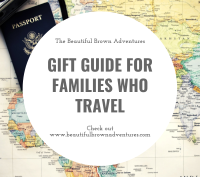 2025-26 Gift Guide for Families Who Love to Travel
2025-26 Gift Guide for Families Who Love to Travel
 The Ultimate Guide to Bringing Your Kids Under-4 to a Cal Football Game
The Ultimate Guide to Bringing Your Kids Under-4 to a Cal Football Game
 How to Be An Anti-Racist Traveler – Our Thoughts on Raising Anti-Racist Traveling Kids
How to Be An Anti-Racist Traveler – Our Thoughts on Raising Anti-Racist Traveling Kids

